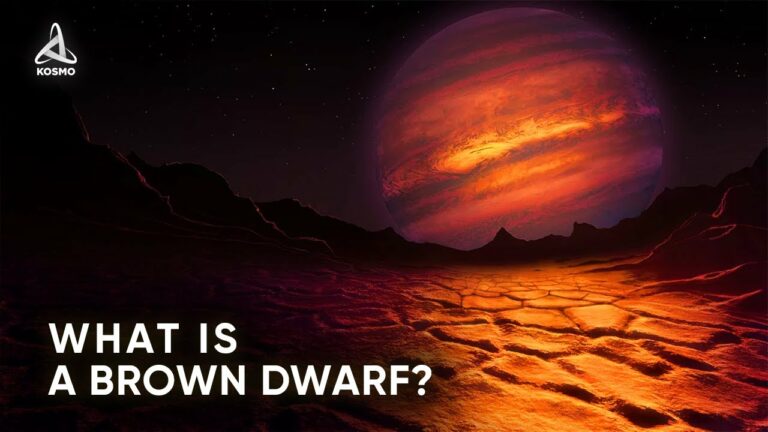WHAT IS A BROWN DWARF – A PLANET OR A STAR?
In order to understand what is a brown dwarf, we need to understand the difference between a star and a planet. It is not easy to tell a star from a planet when you look up at the night sky with your eyes. However, the two kinds of objects look very different to an astronomer using a telescope or spectroscope. Planets shine by reflected light; stars shine by producing their own light. So what makes some objects shine by themselves and other objects only reflect the light of some other body? That is the important difference to understand — and it will allow us to understand brown dwarfs as well.
As a star forms from a cloud of contracting gas, the temperature in its center becomes so large that hydrogen begins to fuse into helium — releasing an enormous amount of energy which causes the star to begin shining under its own power. A planet forms from small particles of dust left over from the formation of a star. These particles collide and stick together. There is never enough temperature to cause particles to fuse and release energy. In other words, a planet is not hot enough or heavy enough to produce its own light.
Brown dwarfs are objects which have a size between that of a giant planet like Jupiter and that of a small star. In fact, most astronomers would classify any object with between 15 times the mass of Jupiter and 75 times the mass of Jupiter to be a brown dwarf. Given that range of masses, the object would not have been able to sustain the fusion of hydrogen like a regular star; thus, many scientists have dubbed brown dwarfs as “failed stars”.
Starting in 1995, astronomers have been able to detect a few nearby brown dwarfs. All of the brown dwarfs discovered so far are parts of a binary system. A binary system is one in which two stars orbit around one another (just like the planets of our solar system orbit our star, the Sun).
It may be hard to imagine, but our Sun, which is relatively small for a star, is heavier than any of 95% of stars in the Universe.
There are also red dwarves 11 times lighter than our host star. However, they are actually not the lightest objects out there. In the wide range between gas giants and the smallest stars in the universe there are some fascinating objects known as brown dwarves, or dwarf stars.
Do not forget to share your opinion with us to provide you with the best posts !




0 Comments